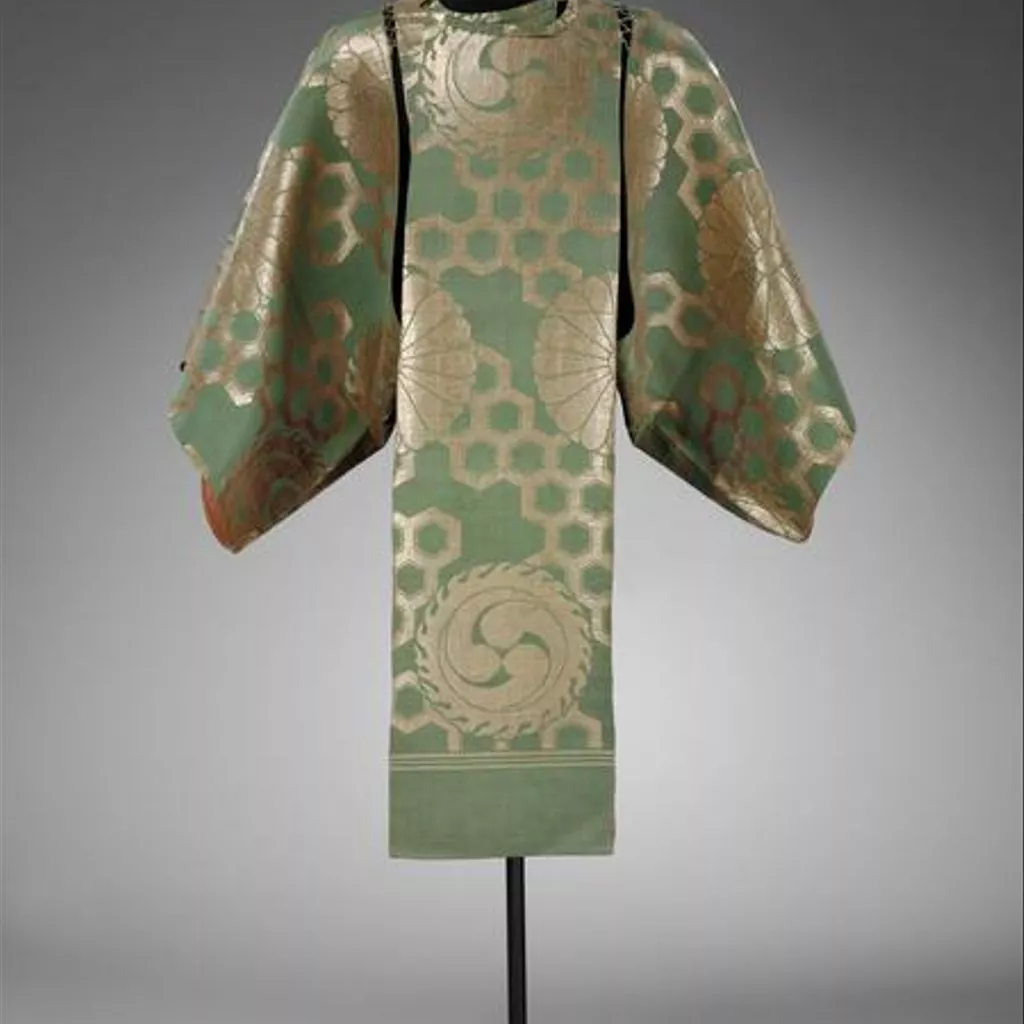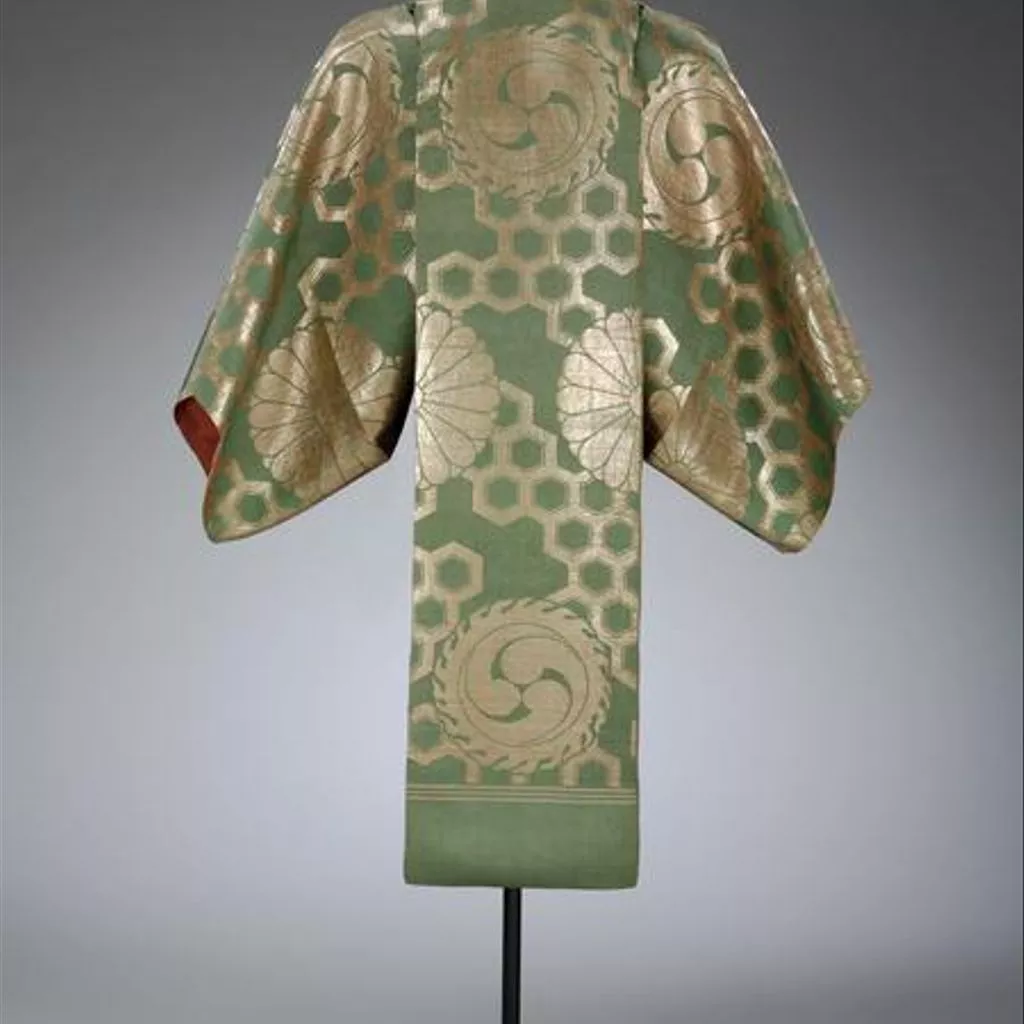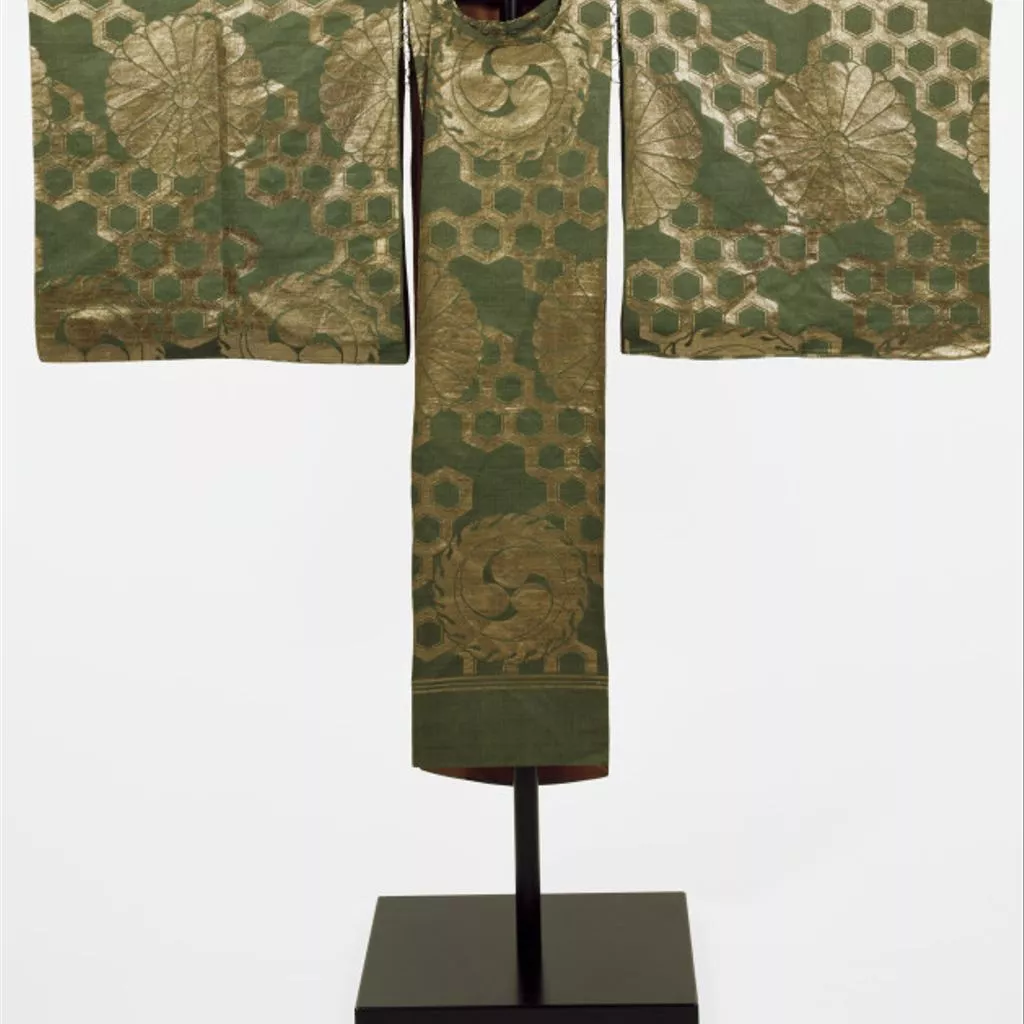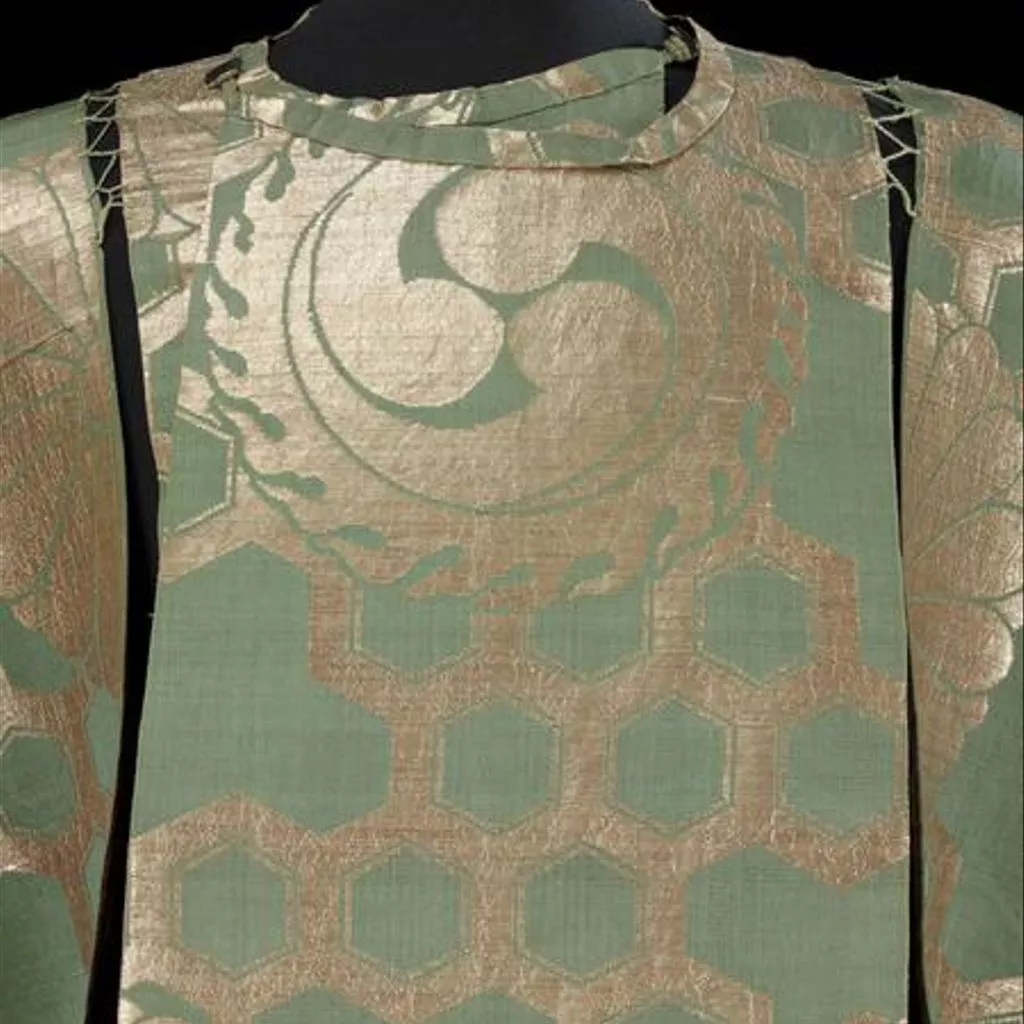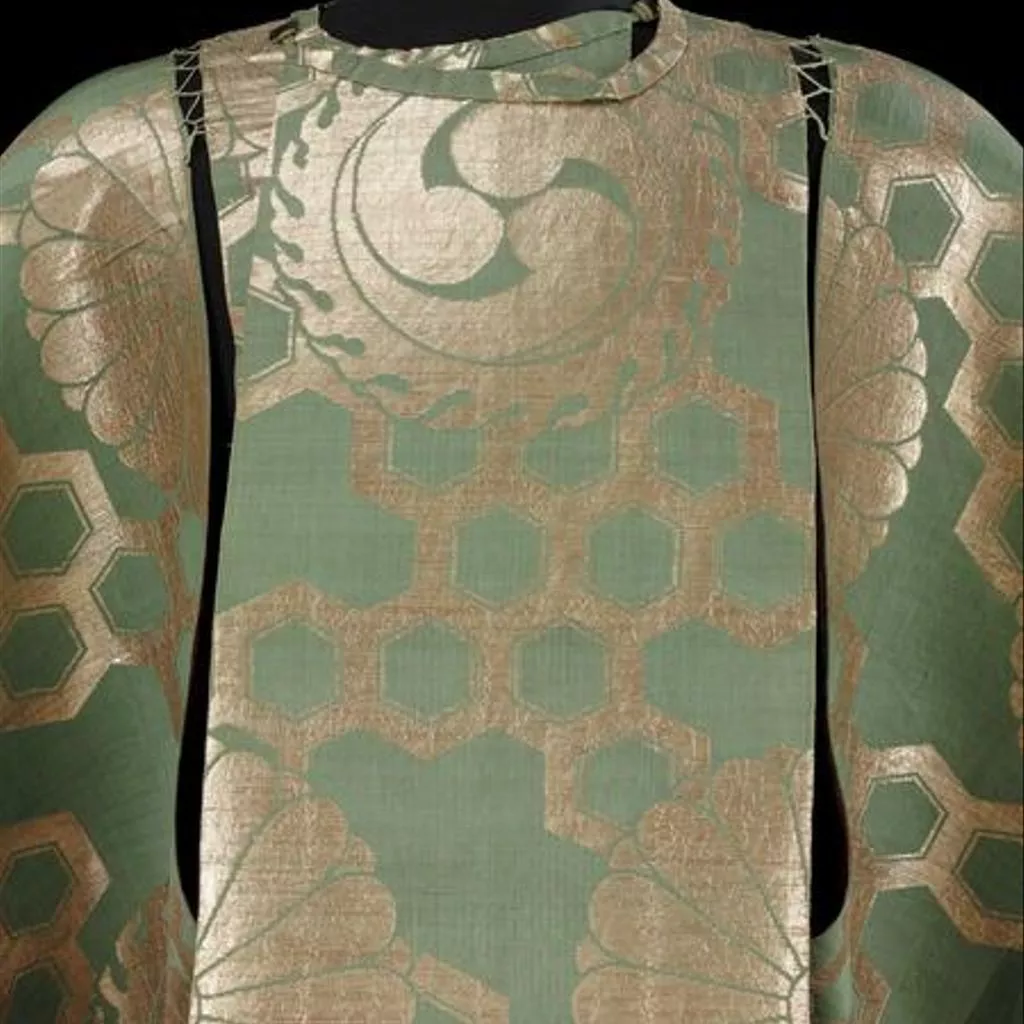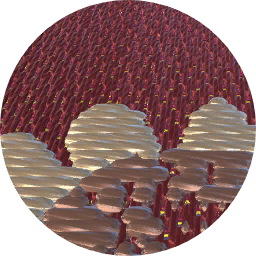Description
Nô robe of the type called kariginu (hunting tunic) with a round neck and double-width sleeves. The main body of the garment consists of two narrow strips of fabric, one for the front and one for the back, seamed together at the shoulders and left open at the sides. The round neck, bound with the same silk as makes up the rest of the garment, fastens to the right with a green cord loop and toggle closure. There is a short underlapping section, composed of three vertically-seamed pieces of silk, which is fastened with another loop and toggle closureto the left on the inside of the garment. The sleeves are joined to the body at the shoulder with green silk cord lacing. Each sleeve is made from one width of silk only, and they are not strictly twice the width of the garment body (garment body 31 cm wide, sleeves 54 cm wide). Both sleeves are leftcompletely open at the body and cuff sides. The garment is lined throughout with thin red plain weave silk. Against a ground of green silk twill weave (3/1), the pattern is made by introducing extra wefts of flat-coloured strips running across the entire width of the fabric and secured with a binding warp of fine red silk in plain weave.
Nô is the classical theatre of Japan which was codified in the 14th century by the father and son actors Kan'ami and Zeami under the patronage of the shôgun (supreme military leader) Ashikaga Yoshimitsu. Under Yoshimitsu the Zen principles of restraint, understatement, economy of movement and frugality of expression became incorporated into the performance. By the early seventeenth century Nô had become an even more austere and formalised drama reserved almost exclusively for the ruling military elite.
The kariginu has its origins in the style of wide-sleeved hunting cloak worn as an informal garment by courtiers of the Heian period (794-1185). The kariginu in the Nô drama is an outer robe to be worn by actors in the role of nobles or gods.
This striking and luxurious lined kariginu is made from dark green silk with bold design in gold (kinran) of interlocking hexagons (kikkô), sixteen-petalled chrysanthemums (kiku) and flaming wheel roundels containing triple-comma motifs (mitsu-tomoe). In performance, the kariginu is traditionally worn over another robe such as the atsuita.
Robe, costume for Nô drama, green twill weave silk with figured decoration in gold, Japan, Edo period, late 18th - early 19th century





